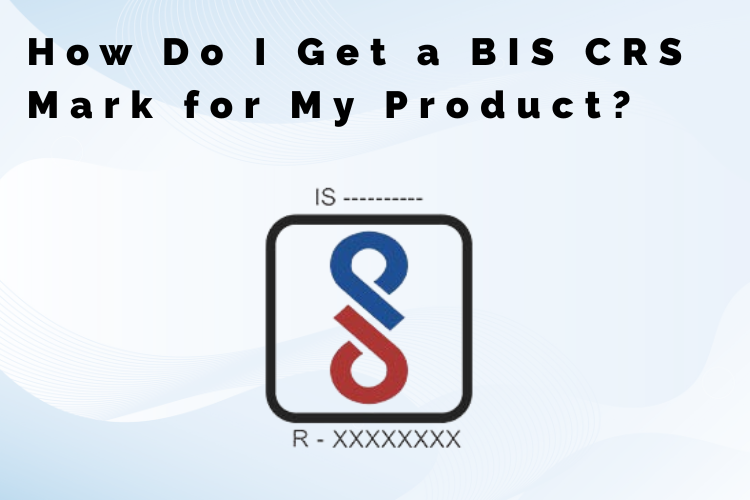In India, electronic and IT products must meet strict safety and quality standards before they reach consumers. The BIS CRS Mark, issued under the Compulsory Registration Scheme (CRS) by the Bureau of Indian Standards (BIS), is the official certification that validates this compliance. Whether you are a domestic manufacturer or an importer, obtaining BIS CRS registration is essential for legally selling your products in India. This article explains step by step how to get a CRS Mark for your product and why it matters.
Understanding the BIS CRS Mark
The CRS Mark is a certification label provided by BIS after a product successfully meets the Indian Standards (IS) under the Compulsory Registration Scheme India. Products covered under this scheme include mobile phones, laptops, LED lights, printers, chargers, and other electronic devices. Displaying the CRS Mark on your product assures consumers and authorities that it meets government-mandated safety and quality standards.
Key Benefits of BIS CRS Registration:
-
Legal compliance with Indian regulations.
-
Consumer trust and enhanced brand reputation.
-
Smooth import and distribution processes.
-
Reduced risk of penalties, confiscation, or market bans.
Step 1: Identify if Your Product Requires BIS CRS Registration
The first step is to determine whether your product falls under the Compulsory Registration Scheme India. BIS has specified a list of product categories that require CRS Mark certification. For instance, mobile phones, tablets, laptops, smart TVs, LED lights, and power adapters are all included. Both domestic and imported products must comply.
To check the complete list, you can visit the official BIS CRS portal, which provides detailed information about product categories and applicable Indian Standards (IS).
Step 2: Product Testing in a BIS-Recognized Laboratory
Once you confirm that your product is under CRS, it must be tested at a BIS-recognized laboratory. The testing ensures that the product complies with the relevant Indian Standards.
Important points about product testing:
-
Tests must be conducted in an accredited BIS lab.
-
The lab generates a test report specifying whether the product meets safety and performance criteria.
-
Only products that pass testing can proceed to registration.
This step is critical because BIS CRS registration depends entirely on the product passing these mandatory tests.
Step 3: Application for BIS CRS Registration
After successful testing, the manufacturer or importer must submit an application for BIS CRS registration. The application process is handled online via the BIS portal and requires the following:
-
Test reports from a BIS-recognized lab.
-
Technical specifications of the product.
-
Company details, including address, GST number, and legal documents.
-
Manufacturing or import details.
BIS carefully reviews all documents to ensure compliance with the Compulsory Registration Scheme India.
Step 4: Factory Inspection (If Required)
For certain product categories, BIS may conduct a factory inspection to verify production processes, quality control measures, and storage facilities. This step ensures that not only the finished product but also the manufacturing practices meet BIS standards.
Step 5: Grant of Registration and Use of CRS Mark
After verification and approval, BIS issues a Registration Certificate to the manufacturer or importer. The registration certificate allows you to use the CRS Mark on your product.
Key points about CRS Mark usage:
-
The CRS Mark must be affixed clearly on the product or packaging.
-
The registration is valid for two years and must be renewed thereafter.
-
Only products covered under the certificate can display the CRS Mark.
Step 6: Renewal and Compliance
To maintain BIS CRS registration, it is essential to comply with all BIS standards continuously. Renewal is required every two years and involves re-evaluation of the product and documents. Continuous compliance ensures your products remain legally approved for sale in India.
Why BIS CRS Registration is Crucial
Obtaining a CRS Mark is more than just a regulatory formality. It ensures consumer safety, builds brand trust, and allows legal market access. Without BIS CRS registration, selling electronic and IT products in India is illegal and can result in penalties or product confiscation. For importers, it also simplifies customs clearance and distribution.
Conclusion
Getting a BIS CRS Mark for your product involves careful planning, testing, and documentation. From identifying your product under the Compulsory Registration Scheme India, conducting tests in a BIS-approved lab, submitting an application, and receiving approval, every step ensures compliance with Indian safety standards.
For manufacturers and importers, BIS CRS registration is essential to gain consumer trust, ensure legal compliance, and successfully operate in India’s electronics market. By following the steps outlined above, you can secure your CRS Mark efficiently and confidently, giving your products the credibility they deserve.


